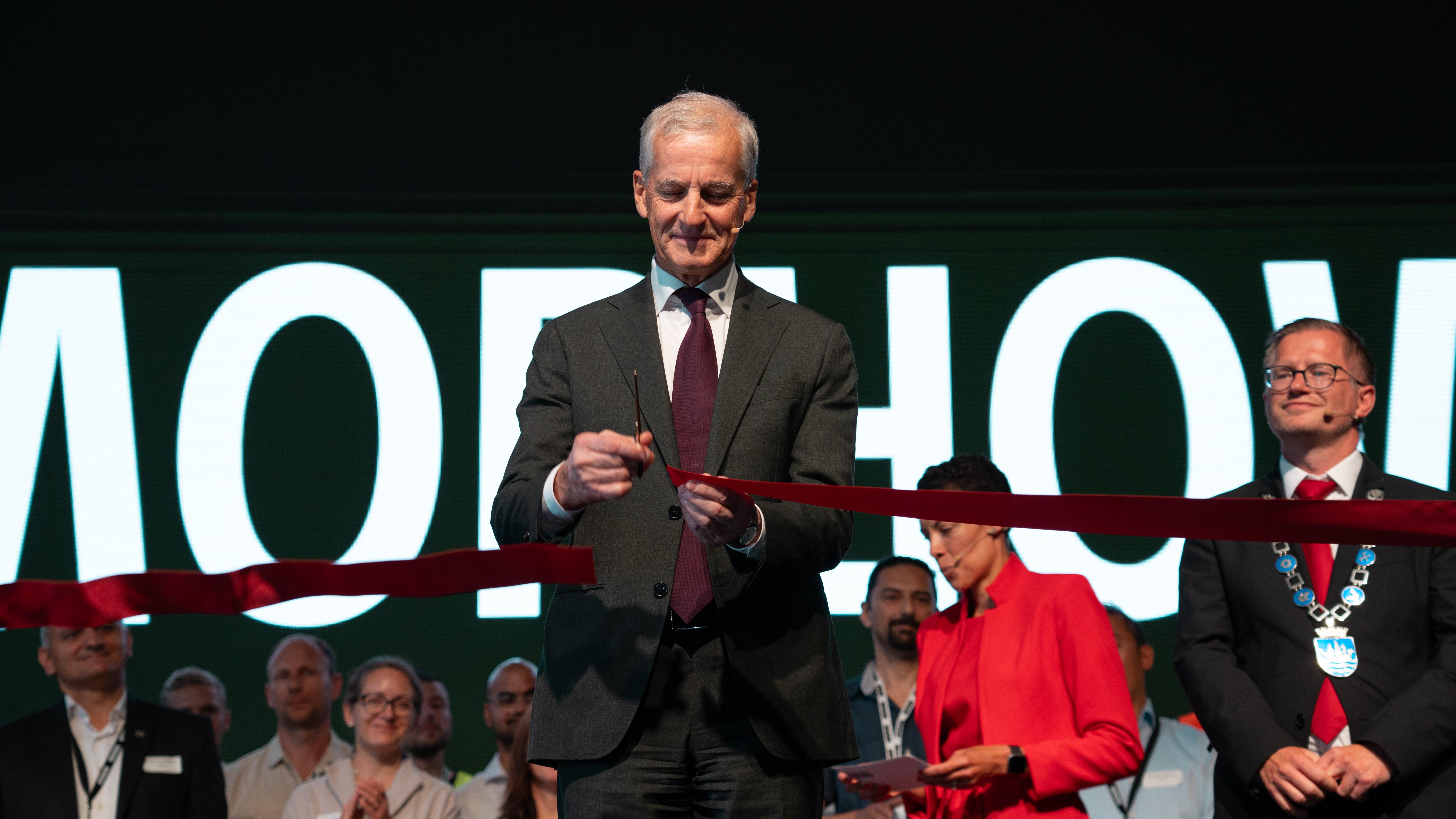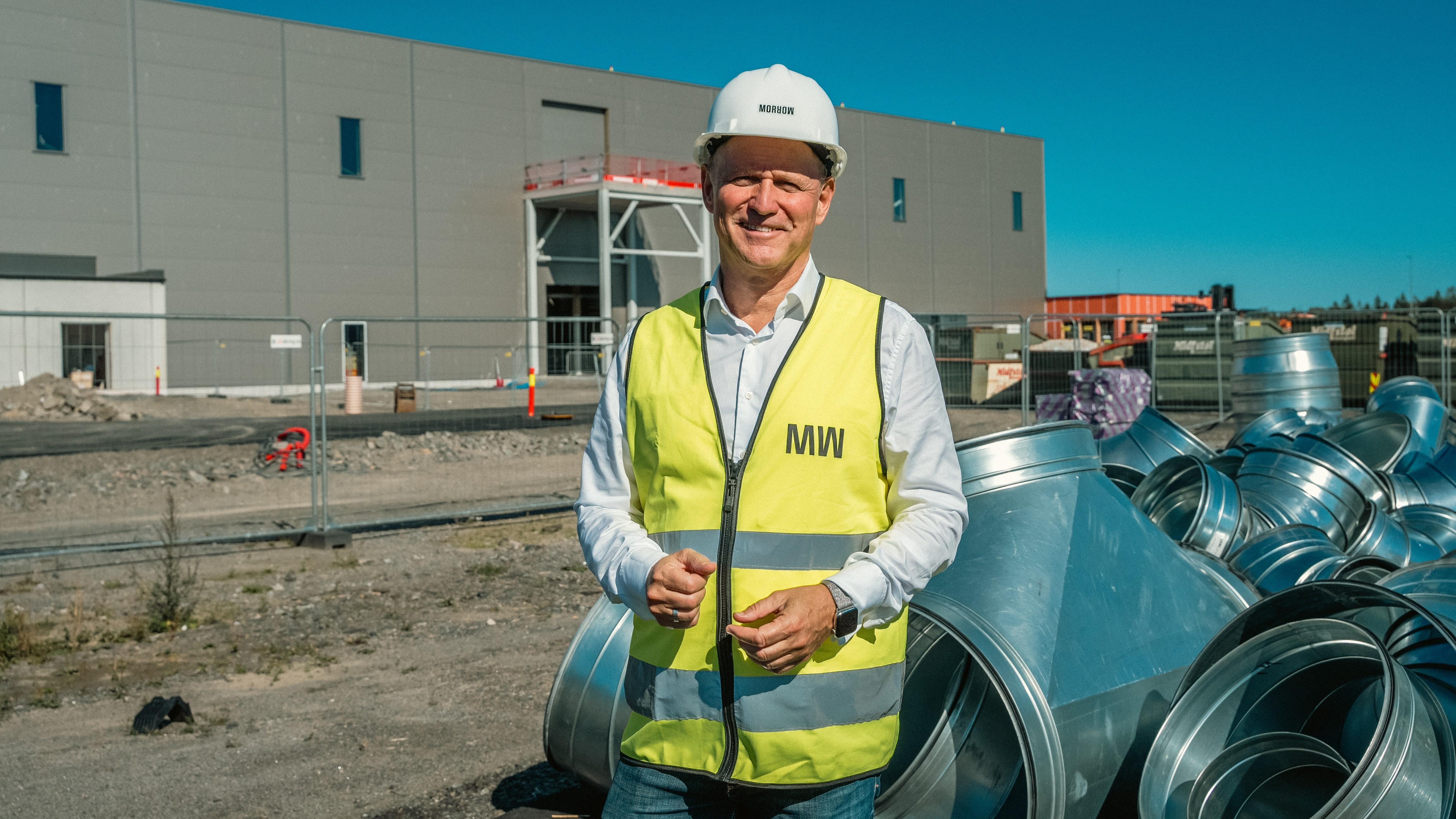More investments needed for Norwegian battery production to fuel the green transition
If the three Nordic countries Finland, Sweden and Norway worked together, they could become a major supplier of batteries and fuel the green transition, but professor Odne Stokke Burhei believes this requires a much greater willingness to invest than we have seen so far.
Some argue that battery production could be Norway's next industry fairytale when the oil and gas era comes to an end.
“But for that to happen, we need to start seeing bigger investments soon. 12 to 13 battery factories could create a similar annual export value to what oil and gas has had until 2022. That is 300 to 500 billion kroner (€26bn to €43bn),” says Odne Stokke Burheim.
 He is a professor at the Department of Energy and Process Engineering at the Norwegian University of Science and Technology NTNU in Trondheim. Burheim has worked with research, teaching and entrepreneurship in the field of batteries for more than 10 years.
He is a professor at the Department of Energy and Process Engineering at the Norwegian University of Science and Technology NTNU in Trondheim. Burheim has worked with research, teaching and entrepreneurship in the field of batteries for more than 10 years.
The largest battery factories currently at the concept stage are one by two kilometres in size.
“A gigafactory like that could create batteries worth 20 to 30 billion kroner (€1.73bn to €2.6bn) in annual exports,” says Burheim.
Would that really be possible in Norway?
“I believe we will get there, but it will take time,” says Stokke Burheim.
It is also necessary to bring some nuance into the comparison with oil and gas, he argues. The point is not only how much battery capacity Norway can export. You also have to consider how profitable that export can become. Oil exports are very profitable.
Burheim explains that battery recycling also plays a crucial part in the green transition and that Norway has enough clean energy to do this too. Then there is the security policy perspective.
“That’s why China and the USA subsidise the production of battery cells, systems and green value chains,” points out Odne Stokke Burheim.
The “starting gun” for the race to produce the world’s best electric vehicles at the lowest price was fired in China in 2004.
Several startups
Burheim was central when Freyr established what was to become a major EV battery production in Mo i Rana in Norway.
“We did the preliminary study of what became Freyr. We have worked on the modelling of the value chain needed to produce batteries,” he says.

Prime Minister Jonas Gahr Støre laid the corner stone for the first phase of Morro's battery factory in Arendal in September 2022. In August this year, he conducted the official opening.
Parallel with Freyr making an attempt, Elinor and Morrow are also trying to increase the production of batteries in Norway. Morrow opened the first part of its factory in August.
“These are three separate companies with separate capital. Freyr failed to raise enough money when they operated out of Norway, but managed to get money from the US stock exchange and moved their business to the USA.
“The two other companies have capital with more locally rooted mandates, as I see it. They seem to take a fairly long-term view on establishing production in Norway," explains Burheim.
Very energy-intensive
Norway’s hydroelectric energy production represents a major advantage to energy-intensive battery production.
“Imagine you are manufacturing a 1 kWh battery. You need 40 to 50 kWh to do that. In other words, 40 to 50 times more energy than the actual battery capacity is needed to produce the battery cells. In Norway, the environmental cost is not that big.
“But globally, energy production is linked to CO2 emissions. Norway also has ample access to electricity, as well as skilled labour and expertise in advanced material processing,” he says.
Burheim envisages a Nordic perspective.
“Norway has explored oil and gas while Finland and Sweden have explored minerals. Together we could have a green value chain. You could imagine getting minerals from Sweden and Finland for battery cell production in Norway and Sweden, countries with a lot of hydroelectric power,” explains Burheim.
Technical solutions
Another more technical issue he is working on is how rechargeable batteries lose capacity through use. Burheim is the deputy leader for one of the eight Centres for Environment-friendly Energy Research (FME), financed by the Research Council of Norway. The research programme receives 1.28 billion kroner (€110m) over eight years.
“We will have between 20 and 30 PhD candidates working,” he says.
“A third technical aspect is achieving efficient production. Today, perhaps 70 to 80 per cent of batteries made in one factory can be sold. Creating good enough quality batteries for sale is a challenge,” he says.

This is what is needed – large-scale battery production. Photo: Morrow
Access to raw materials is a fourth and crucial issue. Global mineral access is key.
“China controls much of the mineral market. Access and price have varied in recent years,” explains Burheim.
Big on the green transition
The US Inflation Reduction Act (IRA) impacts what is possible to achieve in Norway.
“IRA is the largest investment in climate and energy in American history, with a total of 369 billion dollars allocated to trigger investments in zero-emission renewables. China offers 30 dollars or maybe more in state support per kWh battery,” he says.
The US and Chinese subsidies make the situation in Europe challenging.
“The situation will be challenging but also different in three to four years. 2027 is very soon if you are to build factories and get production going in Norway.”
This autumn, the Norwegian state broadcaster NRK focused on batteries and regulatory frameworks in its main TV debate programme.
Some participants expressed confidence that battery production will gain momentum using a development approach similar to how the oil and gas sector was built up in Norway.
“The professional community in Norway learned the craft from those coming from abroad, even though many didn’t even speak English. Today Morrow works with people from Korea. We envision that battery production will grow, but it will be difficult to develop this without a production value chain,” says Burheim, and points out that some have managed to achieve this on a smaller scale.
Companies like ABB, Siemens and Corvus make batteries for ferries and other vessels.
Not plain sailing
In June 2022, the Norwegian Ministry of Trade, Industry and Fisheries published the report “Norway’s battery strategy” which points to strengths and opportunities as well as several possible weaknesses.
One is the lack of competencies in large-scale production. Another is limited Norwegian influence when it comes to developing a regulatory framework in the EU. The report points out that few subcontractors in Norway produce technical components.
The processes for obtaining permits for power usage, emissions, and other regulations are also described as time-consuming. For example, if an industrial company needs access to larger amounts of power, it cannot connect to the electricity grid before securing the necessary permits.
The report also points to possible problems like a lack of power and customs barriers to the EU and UK. Production in Norway is also running out of time because the starting gun for the competition has already sounded.
A major debate
One of the points of contention during the NRK TV debate was state intervention versus private initiative.

Lars Christian Bacher from Morrow outside the factory during construction in Arendal. Photo: Morrow
Morrow Batteries’ CEO Lars Christian Bacher is among those who strongly support cooperation with the state. He has worked for Statoil and Equinor for 30 years.
“We need a lot of capital to scale up Morrow. We must do the same as when the Norwegian oil and gas industry was established. Technology and skills were brought in from abroad. We became skilled because we have some of the world’s best-skilled workers, engineers and researchers,” Bacher told NRK.
The much larger company Northvolt tried in Sweden but is now in a deep crisis. Bacher believes there are several reasons why Morrow should be able to become profitable in Norway.
“Battery production is difficult, so we must not try to take on too much. We have chosen a well-known, proven production technology. This type of battery chemistry is the easiest to produce – LFP, lithium iron phosphate,” says Bacher.
“We have the world’s best skilled workers and engineers. And finally, we target segments in the market where the willingness to pay is large,” he told NRK.
- Shelved
-
Freyr built a battery cell factory as a pilot project in Mo i Rana, Norway, in 2022. The project was shelved in late 2023. Photo: Freyr
 Follow us on Facebook
Follow us on Facebook
